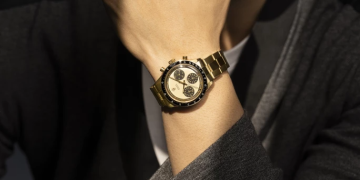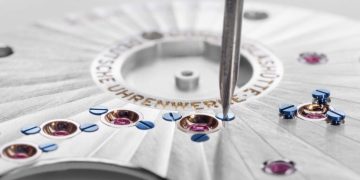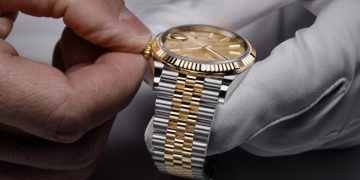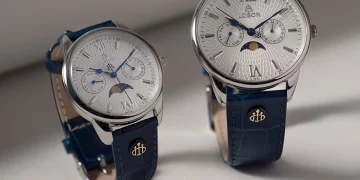When we think of the chronograph—a watch capable of measuring elapsed time—we often think of iconic models like the Omega Speedmaster, Rolex Daytona, or the Breitling Navitimer. These timepieces have become synonymous with precision, sport, and style. However, few people are aware that the chronograph’s invention and evolution stem from the ingenuity of an often-overlooked figure in watchmaking history. The watchmaker in question is Louis Moinet, a French horologist whose contributions to the world of chronographs are groundbreaking yet largely forgotten by mainstream history.
Moinet’s role in developing the chronograph, despite being one of the first to invent this critical feature, has been obscured by time and overshadowed by other prominent figures in watchmaking. In this article, we will delve into the life of Louis Moinet, explore why history has neglected his legacy, and compare his contributions to modern chronograph technology to assess the magnitude of his influence.
The Origins of the Chronograph: A Leap Forward in Timekeeping
The chronograph, as we understand it today, is a vital tool for measuring short intervals of time—used in sports, aviation, and space exploration. But the origins of this innovation can be traced back to the early 19th century, long before the modern digital or automatic chronograph was conceived. Before the development of the chronograph, watchmakers had already created timepieces that could measure time in increasingly precise increments, but the ability to start, stop, and reset a timer on demand was a major leap forward.
The history of the chronograph is commonly attributed to Nicolas Rieussec, a French watchmaker, who is often credited with inventing the first true chronograph in 1821. Rieussec’s chronograph was designed as a tool for tracking horse races, using a unique device that left ink marks on a rotating dial to record elapsed time. While this invention was a key step in the evolution of timekeeping, the real leap towards the chronograph we know today—particularly the chronograph with a push-button mechanism—came from Louis Moinet.
Louis Moinet: The Forgotten Genius
Louis Moinet (1768–1853) was a highly skilled watchmaker, engineer, and inventor who worked in Paris and later in the French provinces. He was well-regarded in horological circles during his lifetime for his incredible technical skill, innovative designs, and artistry in crafting high-precision timepieces. Moinet was also a prolific creator of astronomical and scientific instruments and a notable figure in early mechanical engineering. However, his contributions to horology are often overshadowed by the fame of other contemporaneous watchmakers, despite his pivotal role in the development of the chronograph.
In 1816, Moinet developed a timepiece he called the “compteur de secondes” (counter of seconds), which was capable of measuring short intervals of time to an accuracy of 1/60th of a second. This was the world’s first true chronograph, predating Rieussec’s invention by five years. Moinet’s chronograph was revolutionary in that it incorporated a push-piece (push-button) mechanism, which allowed for the precise starting and stopping of the time measurement—a feature that is now essential in modern chronograph design. The chronograph was not just a technical marvel; it was also a beautifully crafted timepiece, displaying Moinet’s unparalleled artistry in watchmaking.
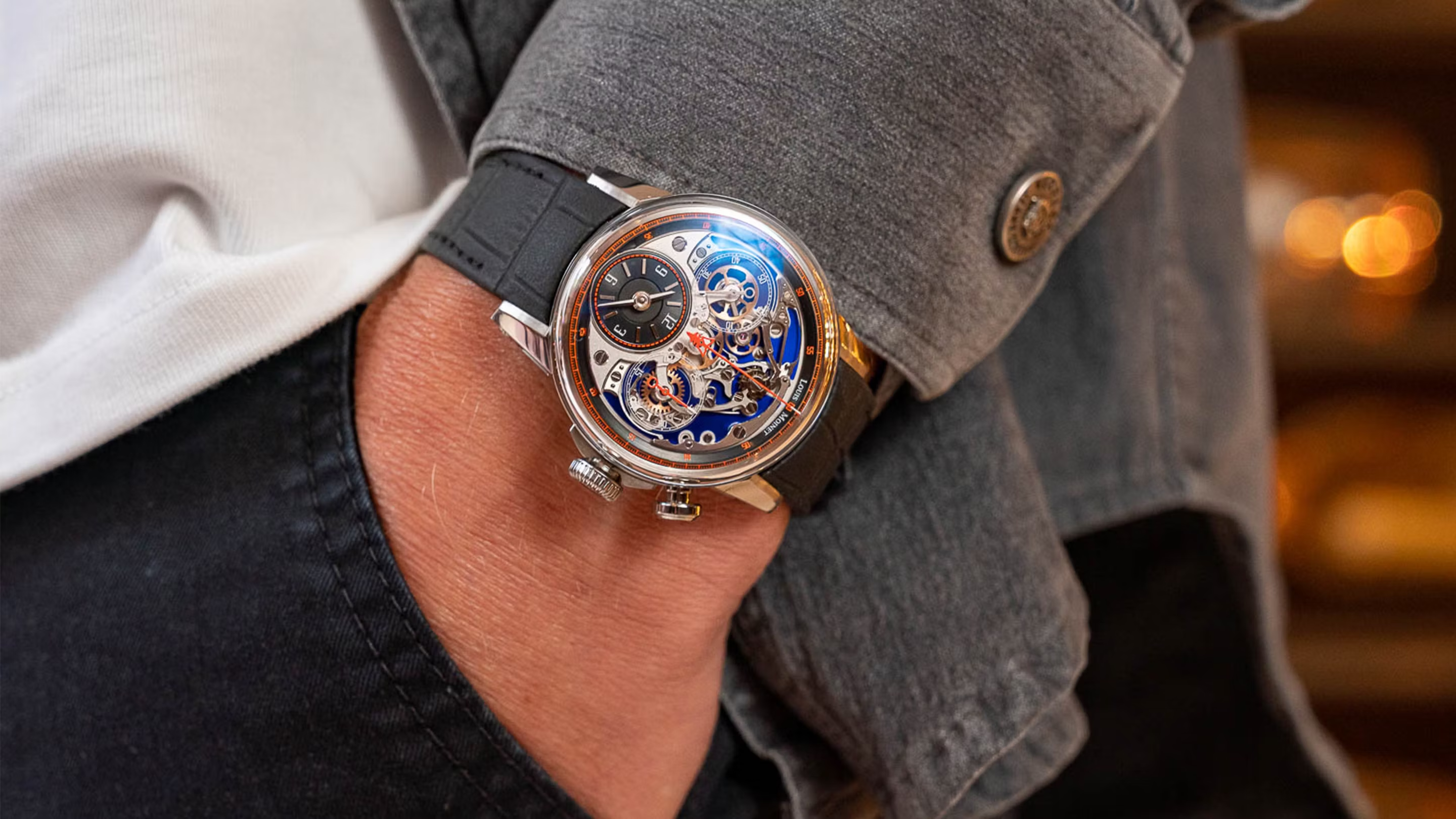
Why Did History Erase Louis Moinet’s Legacy?
Despite Moinet’s pioneering work in the creation of the chronograph, his legacy was largely erased from watchmaking history. Several factors contributed to this historical oversight. The most notable reason is the fact that Moinet’s chronograph was not commercially successful in the way Rieussec’s design was. Rieussec’s chronograph, being used for horse races and other practical applications, gained more attention and recognition, while Moinet’s invention remained a more obscure creation that was not widely adopted in mainstream horology at the time.
Additionally, Moinet’s chronograph was produced in a relatively small quantity, and due to the nature of the watchmaking industry in the early 19th century, many innovations of the time were not properly documented or acknowledged. Unlike more well-known figures in horology, Moinet did not have the resources or networks to ensure the widespread distribution of his inventions.
The rise of Louis Audemars and other prominent watchmakers in the mid-19th century may have also played a role in overshadowing Moinet’s legacy. By the time his chronograph concept gained recognition, it had already been overshadowed by newer innovations in watch technology, leaving Moinet’s pioneering work as a forgotten relic of horological history.
Moreover, the lack of clear historical records and the subsequent obscurity of Moinet’s contributions may have contributed to the misconception that Rieussec was the first to invent the chronograph. Moinet’s work remained largely uncredited until more recently when scholars and collectors began revisiting his designs, recognizing their profound impact on the development of timekeeping.
Moinet’s Chronograph vs. Modern Chronograph Technology
Modern chronographs have evolved significantly from Moinet’s original design, yet the fundamental principles of his invention remain embedded in contemporary chronograph technology. The push-button mechanism that Moinet introduced remains a core component of today’s chronograph watches, providing a user-friendly and precise method for measuring elapsed time.
The key advancements in chronograph technology since Moinet’s time have primarily focused on improving accuracy, durability, and the functionality of additional features. For example, modern chronographs often include additional subdials, tachymeters, and more complex complications such as flyback or split-second mechanisms. These innovations have transformed the chronograph into a versatile tool for a variety of professional and sporting applications.
However, Moinet’s original chronograph was a marvel of precision, and his mechanical ingenuity laid the groundwork for all subsequent developments in chronograph technology. The accuracy with which he was able to measure time intervals, even down to 1/60th of a second, foreshadowed the technological advancements that would come to define modern chronographs, making his early invention a key milestone in horological history.
The Resurrection of Louis Moinet’s Legacy
In recent years, the horological community has begun to rediscover Louis Moinet’s contributions to watchmaking. Several key initiatives have been taken to restore Moinet’s legacy. One notable example is the launch of the Moinet Chronograph by the luxury Swiss brand Louis Moinet, which pays tribute to the inventor and brings his vision back into the spotlight. By reviving Moinet’s original design and incorporating modern advancements, this modern chronograph model highlights how Moinet’s principles remain relevant to today’s watch industry.
The rediscovery of Moinet’s work also sparked greater interest among collectors, historians, and enthusiasts, leading to a renewed appreciation for his role in shaping chronograph technology. In the past few decades, Moinet has been recognized as one of the great early pioneers of modern horology, and his work has been celebrated in horological publications, museums, and auctions.
Moinet’s Influence on Contemporary Watchmakers
While Moinet’s name may not be as widely recognized as some of the other legendary figures in watchmaking, his influence is undeniable. Many contemporary horologists and watchmakers, especially those working with chronographs, have cited Moinet’s contributions as an inspiration. His commitment to precision, craftsmanship, and mechanical ingenuity has resonated with today’s watchmakers, who continue to refine and perfect the chronograph complication.
In particular, luxury watch brands that specialize in chronograph models, such as Rolex, Omega, and Audemars Piguet, have incorporated elements of Moinet’s original design into their own timepieces. The push-button mechanism, which Moinet pioneered, remains a cornerstone of chronograph functionality, even in today’s high-tech digital watches.
Conclusion: Reclaiming Moinet’s Place in Watchmaking History
Louis Moinet’s pioneering work in the development of the chronograph deserves greater recognition. Despite being overshadowed by other figures in watchmaking history, Moinet’s contribution to the evolution of horology cannot be overstated. His invention laid the foundation for the chronographs we know and love today, and his work continues to inspire modern horologists.
It’s time for the world to remember Louis Moinet not as a forgotten figure, but as one of the true innovators of watchmaking. His legacy is as timeless as the chronographs he created, and his ingenuity deserves to be celebrated for generations to come.





